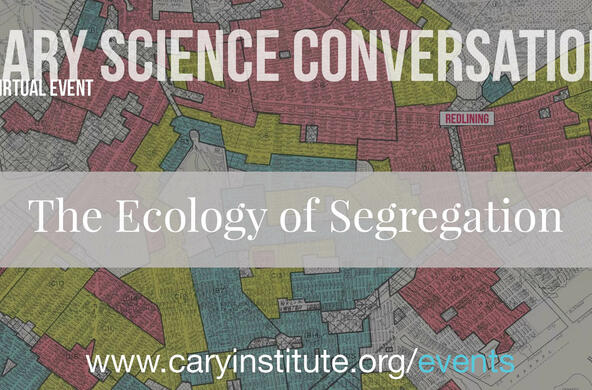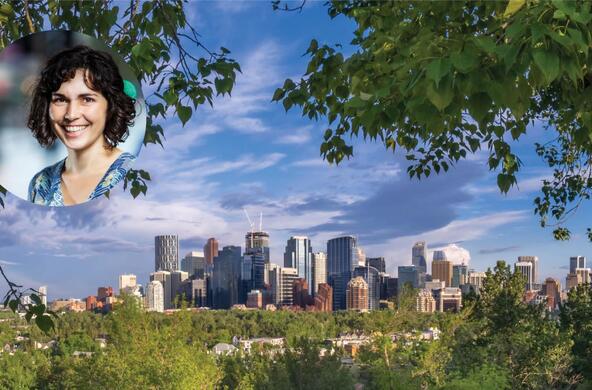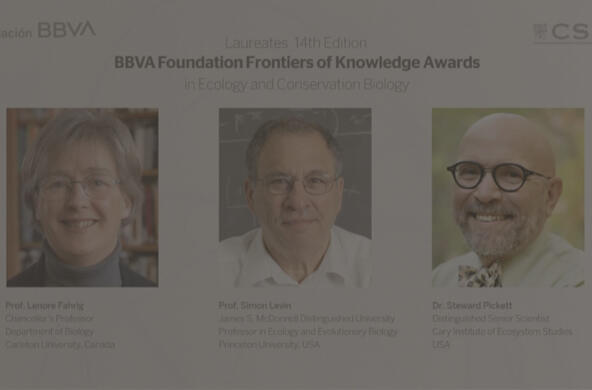The Baltimore Ecosystem Study (BES) is a collaborative of over 30 researchers, educators and policy makers working together to understand how urban ecosystems function. Led by Institute Distinguished Senior Scientist Dr. Steward T. A. Pickett, other IES staff members involved in the effort include: Microbial Ecologist Dr. Peter M. Groffman, Educator Dr. Alan R. Berkowitz, BES Education Coordinator Ms. Janie Gordon, BES Information Manager Mr. Jonathan Walsh, and Administrative Assistant Ms. Holly Beyar.
Of these staff members, Ms. Gordon is the only person headquartered in Baltimore. As BES’s Education Coordinator, her position is essential to an array of educational programs— from teacher training workshops to after school enrichment programs for elementary and middle school students. Ms. Gordon’s success stems from her familiarity with city schools and universities, extensive knowledge of partner organizations, love of education, and passion for the city she calls her home.
Recently, Ms. Gordon discussed her pathway to BES, the projects she is working on, and her vision for the future.
How did you become involved with BES?
A Baltimore resident since 1974, I’ve always been interested in programs that strive to improve the city. I learned about BES while working for the EnvironMentors Project. The Project paired high school students from city schools with scientist mentors, with the goal of producing a science project. We held lots of field trips and outings based on student enrichment. In an effort to recruit new mentors, I attended the 2003 BES quarterly meeting, where I met Dr. Berkowitz. As luck would have it, my EnvironMentors position had ended when the BES Education Coordinator position became available.
What does your job as BES Education Coordinator entail?
My goal is to coordinate, facilitate, and maximize the educational impact of the research that BES is doing in the city. From an educational perspective, this involves working with teachers, school administrators, and students. We have a cadre of teachers in city high schools and middle schools that are using BES science to engage their students in ecological investigations. Working with them, I help develop lessons that support state and city standards while giving teachers a chance to engage students in local science that is relevant to their lives.
Tell me a little about KidsGrow.
A 12-year old program coordinated by the Parks & People Foundation, KidsGrow provides after-school enrichment for students in 2nd to 7th grade. Current participants hail from two urban schools in West Baltimore, an economically depressed section of the city. BES has been collaborating with KidsGrow for three years. Our goal is to develop an engaging ecology curriculum that lets students do hands-on investigations. We want students to be both knowledgeable of and excited about the ecology of their city.
What have been some KidsGrow highlights?
There have been several. The Leaf Pack Project was a wonderful integration of cultural and scientific themes. Students investigated stream ecology using field experiments that Dr. Wangari Maathai, a Nobel Peace Prize Laureate, performed with her students in Kenya. In addition to getting students outdoors and teaching them scientific principles, the project exposed them to labs at the University of Maryland Baltimore County, where they analyzed stream animals. For most of the 3rd- 6th grade participants, this was their first trip to a college campus.
Black History Month was a great celebration of African American scientists. BES scientists, including IES ecologist and BES Project Director Dr. Steward T.A. Pickett, University of Missouri wildlife ecologist Dr. Charles H. Nilon, and USDA soil scientist Dr. Quinn Holifield, visited KidsGrow to talk with students about their work. The student interviews were priceless, with kids exploring questions such as “what were you like at my age” and “when did you know you wanted to be a scientist”?
Tell me about the Investigating Urban Ecosystems Program (IUE).
IUE workshops integrate BES research with classroom lessons and investigations, with the goal of providing middle and high school teachers with the resources they need to bring ecology to their students. When teachers are equipped and confident in their ability to teach a subject, students reap the benefits. Recent workshops have focused on urban schoolyard hydrology, earthworms, and watershed explorations.
Participating teachers interact with BES scientists and educators while engaging in outdoor investigations. Attendees come from schools in Baltimore City and Baltimore County. They leave the workshops with classroom lessons based on research that is happening in their own city. Our overall motivation is to nurture interest and reduce obstacles to teaching ecology in the classroom.
Who develops the lessons that you share with IUE teachers?
The units taught in the workshops are developed by BES Education Fellows. They are practicing teachers that are awarded fellowships to work on the units during the summer, in collaboration with a BES scientist, Dr. Berkowitz, and myself. Crafted with an eye toward education standards, the units strive to get students collecting and analyzing real data.
What is the High School Ecology Teaching Study?
If we are going to improve the way that ecology is taught in Baltimore schools, we
need a snapshot of what is going on in science classrooms. How is ecology being taught? Do students have the opportunity to perform authentic investigations? Are teachers confident in their ability to teach the topic? By surveying teachers, the High School Ecology Teaching Study is giving us answers to these questions. Survey results will help guide future BES education efforts. Findings will also be shared with colleagues who are doing environmental education at city, state, and local levels.
What future projects are you looking forward to?
We have a new BES intern, Ms. Emily Reisner, and I am excited about the work she is doing. Following the aftermath of Hurricane Katrina, she compiled a series of lessons that explored the scientific, social, and demographic issues surrounding weather disasters. The social component, including race and poverty, is very salient to urban dwellers.
As a study, BES is broken into sub-disciplines. Working with scientists on the Social Demographic Team, one of our fellows has developed a Neighborhood Investigation unit. Students will explore their neighborhood via traditional mapping, historical photos, surveys of lots and housing stock, analysis of storm- water retention, and personal interviews. The goal is to document neighborhood change; what’s good, what needs improvement, and how young people can help.





